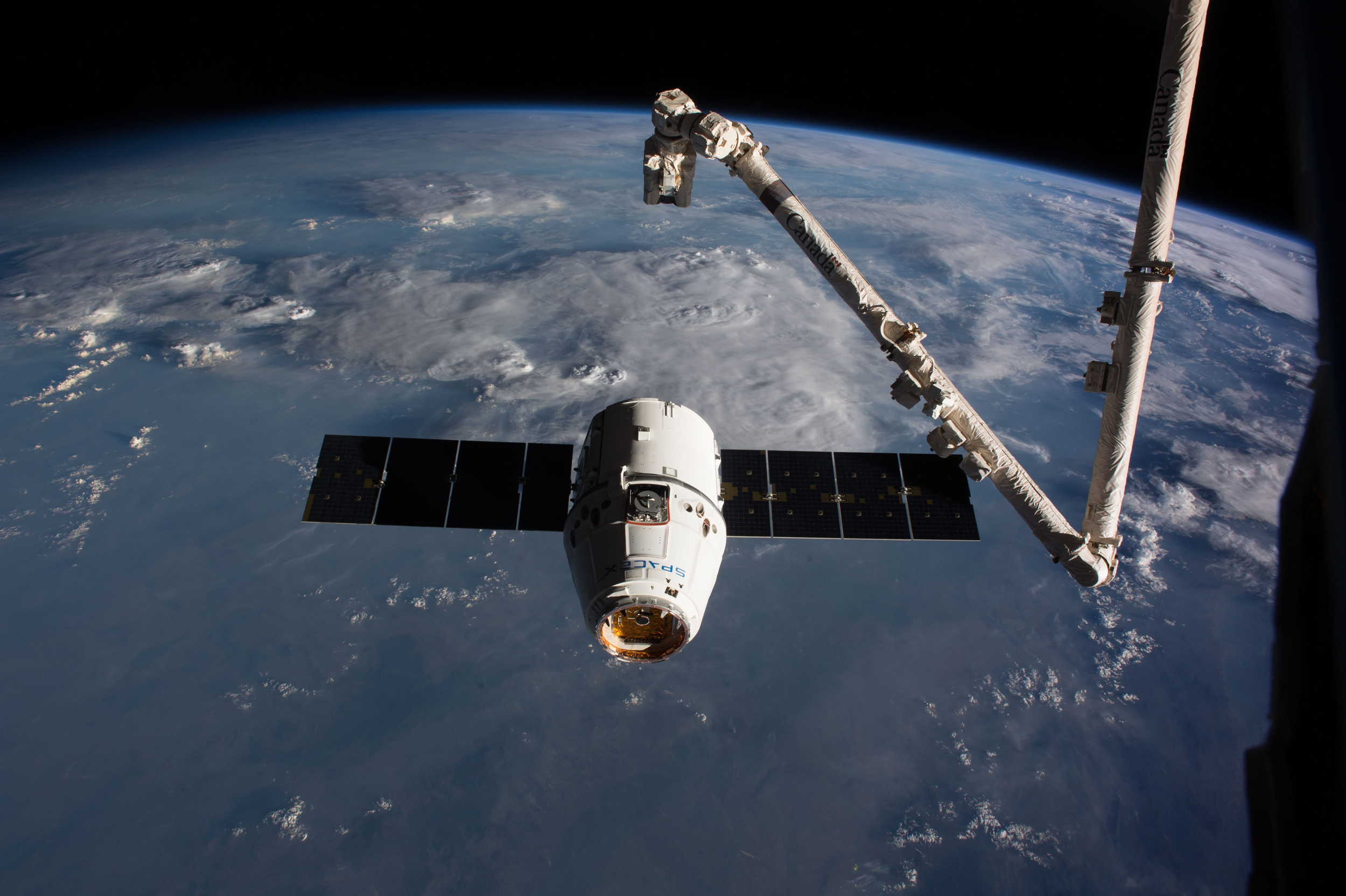For a lot of kids, and for some fully grown adults, it’s the ultimate dream: going to space. Until now, that ability has been restricted to mostly astronauts. But that could all change soon.
Private companies have toyed with the idea of launching paying customers into orbit for years. Only recently, though, have some of them reached the brink of making it a reality.
For now, it’s a three-team race, with Elon Musk, Jeff Bezos, and Richard Branson leading the charge. So how realistic is it that one of them succeeds at launching everyday citizens in 2018? Here’s a breakdown.
1. SpaceX
Musk has huge plans for earth’s beyond–specifically, sending people to live there. His plan to colonize Mars calls for sending up humans by the hundreds on an 80-day mission to the Red Planet, and once there, he wants people to live in functional cities equipped with everything from manufacturing plants to pizza joints.
SpaceX’s current business model, though, doesn’t revolve around launching humans. Instead, its focus is on sending up satellites, research equipment, and supplies for the International Space Station. That will soon change, though: The company tells Inc. that its first-ever manned flight, which will include a crew of NASA astronauts en route to the ISS, should take off from the Kennedy Space Center in early-to-mid 2018. It will mark the first time Americans are launched from U.S. soil since 2011.
But SpaceX doesn’t plan on stopping at the space station. In February, Musk announced that the company intends to launch two private citizens on a trip around the moon sometime in 2018. Those people, whose identities are still unknown to the public, approached SpaceX about the potential mission–and have already paid a “significant deposit,” according to Musk.
SpaceX tells Inc. it still intends to hit this goal, but doesn’t have any further news yet. Before the company can slingshot people around the moon, though, it needs to achieve another critical milestone: the launch of the Falcon Heavy. The massive 27-engine rocket, which will be the most powerful since the Saturn V used for the Apollo missions, is slated for its first test run in January at the earliest, according to the company.
Musk, of course, has been known to blow through deadlines, so there’s no telling how realistic that is. As recently as March, the entrepreneur was talking about a summer launch; now, it won’t take off till the first month of next year at the earliest. Smart money says 2018 is too aggressive of a goal, though it’s worth noting that SpaceX’s tourist-related goals are far loftier than those of its peers, so you can’t fault the company too much if it falls up short.
2. Blue Origin
Jeff Bezos’s company has taken the opposite approach of SpaceX: It wants to focus on tourists first, then start launching cargo into orbit. The firm’s plan is to send people up for 11-minute rides to the edge of space, about 60 miles above earth’s surface. You won’t be able to surprise your loved ones this holiday season–Blue Origin hasn’t yet put a price tag on the experience. But, it’s getting closer: On Tuesday, the company executed the first launch of its New Shepherd rocket in over a year, sending up and safely landing a dummy dubbed Mannequin Skywalker from its Texas site.
Like SpaceX, Blue Origin will save on costs by reusing its rocket boosters, which will cruise gently back to earth and get refurbished before being put back to work.
CEO Bob Smith said in October that the company will launch humans into space within 18 months, which places the end of the range in April 2019. That date is later than previously hoped for: In 2016, Blue Origin said it was targeting a 2018 launch. “We will fly humans when we’re ready, and not a moment sooner,” the company told CNN Money recently.
In the oft-delayed space industry, it’s hard to imagine a company delivering on its best case scenario; “within 18 months” probably means “at least 18 months.” But Jeff Bezos has surprised people before.
3. Virgin Galactic
Virgin Galactic has had its share of setbacks–most notably, the death of its test pilot during a crash in the Mojave Desert in 2014. That tragedy, which was ruled by the National Transportation Safety Board to be caused by a combination of pilot’s error and a lack of a mechanism against such errors, led to a two-and-a-half-year moratorium on powered test flights for the company while it worked to redesign its planes.
The brain child of adrenaline junkie Branson, Virgin Galactic’s primary objective is to send people to space for recreational purposes. Its vehicle for getting there is vastly different than the other two: the airline magnate’s vessel is less rocket ship and more futuristic jet plane. The SpaceShipTwo takes off attached to the belly of a larger carrier aircraft, then detaches and soars through the lower throngs of space at 3,000 mph.
Virgin Galactic charges $250,000 for a ticket, so it’s not surprising that its waiting list is star-studded: It includes celebrities like Tom Hanks, Leonardo DiCaprio, and Katy Perry, all of whom will get to experience a few minutes of weightlessness and 60-mile-high views of the earth.
Branson’s company has conducted several successful test runs over the past few months, flying the ship to 50,000 feet aboard its carrier plane and releasing it, allowing it to glide back to earth. The next step is a fully powered test that reaches space. Branson predicted in October that that was only three months away, and that he would be in space within six. Once that happens, tourists shouldn’t be too far behind.
Given the less complicated nature of Branson’s plan, his company could be the front runner for taking everyday folks to uncharted territory in 2018. And by “everyday,” of course, we mean those with $250,000 to spare. So start saving your paychecks.













